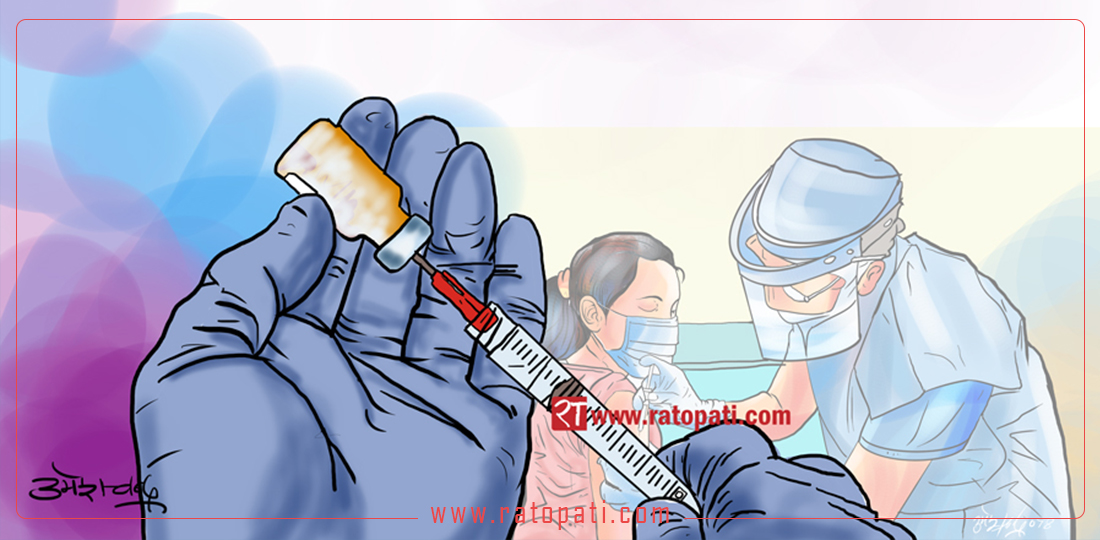When to give which vaccine to infants?
These symptoms may appear after giving vaccines to babies

To protect from possible diseases in the future, infants are given different vaccines. To make them physically healthy, develop their immunity, and prevent various diseases, vaccines are given. Some are injected while some are fed. And not only babies but even pregnant women are given such vaccines.
According to the Immunization Branch under the Family Welfare Division, children under two years of age are given free vaccinations to protect them from 11 types of diseases including whooping cough, Tetanus, Hepatitis B, Haemophilus Influenzae, Japanese Encephalitis, Pneumonia, Measles-Rubella.
B.C.G. vaccine
This vaccine is given to the infant once before reaching one year of age. It protects from Tuberculosis. B.C.G. vaccine is given by injecting in the upper part of the right arm. The place where vaccination is done must not be pressed and oil, soap, and such must not be applied there.
In the place where the B.C.G. vaccine has been given, children experience a reaction there and a small lump like a blister appears. The skin ripens where the vaccine is given and this may last up to two weeks.
This is common and it will later on disappear. Ripening of the skin after injection is a symptom of attaining immunity from the disease.
D.P.T. Hepatitis B. (Hep B)
This vaccine is given at the age of 6 weeks, 10 weeks, and 14 weeks after birth. This vaccine protects against diseases such as whooping cough, pertussis, hepatitis B, bacterial meningitis, and pneumonia caused by Haemophilus B.
This vaccine is administered three times at one-month intervals in the middle outer part of the left thigh. Children may develop a mild fever after receiving the Hep B vaccine, but this usually clears up on its own. In case of fever or swelling at the injection site after vaccination, Paracetamol can be given.
Most vaccinated children may experience pain, redness, or swelling at the injection site. If the child continues to cry for more than 3 hours after vaccination, a health professional should be consulted.
P.C.V.
This vaccine protects against pneumonia. This vaccine is given from birth to 6 weeks, 10 weeks, and 14 weeks of age. This vaccine is given in the middle outer part of the left thigh three times with a gap of one month. Children may develop a fever after receiving this vaccine. But after some time the fever gets cured by itself.
There may be pain, redness, and swelling at the injection site. If the child cries for more than 3 hours continuously, a health professional should be contacted.
Polio O.P.V.
This vaccine is given twice at 14 weeks and 9 months for children under one year of age. If the vaccine is missed in the regular schedule within the age of one year, all children within the age of 5 years should receive 2 doses at a gap of 16 weeks, i.e. 4 months apart.
The amount of polio vaccine is 2 drops. This vaccine is administered orally. The vaccine may not work if the child vomits immediately after the drops are given by mouth. In that case, 2 drops of polio should be given twice again.
Measles-Rubella
This vaccine is given within 9 months to 1 year after birth. This vaccine is given to protect against measles and rubella. Children are vaccinated in the upper part of the right thigh. General fever may occur 4-5 hours after measles-rubella vaccination. Some children may develop body aches after 1 week of vaccination. However, about one in one million children may have anaphylaxis.
T.T-T.D
This vaccine is given to pregnant women. T.T. prevents Titanus. Vaccination must be done 2 times with a difference of one month in the first pregnancy, and 1 time in subsequent pregnancies. This vaccine is administered on the upper outer part of the left arm.
Japanese Encephalitis
This vaccine is given to children from 12 to 23 months and one dose is enough. This vaccine protects from Japanese Encephalitis.
This vaccine is given on the upper part of the child's right thigh. There will be pain, swelling and redness, and the skin will ripen at the injection site, which will disappear on its own.
F.I.P.V.
This vaccine is given twice at the age of 6 weeks and 14 weeks after birth. It works against diarrhea caused by rotavirus.


Leave Comment